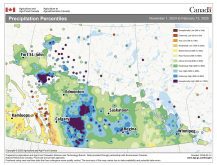This cattle market information is selected from the weekly report from Canfax, a division of the Canadian Cattlemen’s Association. More market information, analysis and statistics are available by becoming a Canfax subscriber by calling 403-275-5110 or at www.canfax.ca.
No U.S. interest in feds
In the previous two weeks, western Canadian fed cattle prices averaged in the low $160s per hundredweight, while Ontario prices averaged in the low to mid $170s. Last week Alberta fed prices were at an estimated $12.50 per cwt. discount to the U.S. market.
Read Also

No special crop fireworks expected
farmers should not expect fireworks in the special crops market due to ample supplies.
Eastern Canadian prices moved to a slight discount to the Nebraska market last week, but before that, Ontario prices were the highest in North America.
In Western Canada, dressed sales were reported from $265-$276 per cwt. delivered. Cattle were being scheduled for the week of Feb. 21-28 delivery. Competition on the cash market was weak and U.S. buying interest non-existent. One packer limited the number of cattle bought from each producer.
The Alberta fed cash-to-futures basis was reported at -$13.76 per cwt. and for the end of January was the weakest basis since 2014. For the week ending Jan. 22, Canadian Prime and AAA grading was 79.91 percent compared to 74.02 percent last year. This is a new record high for Prime/AAA grading.
In Ontario, dressed sales were reported at $290 per cwt. delivered, steady with the previous week. Cattle were being booked for mid-February delivery. Ontario fed slaughter for the week ending Jan. 22 totaled 11,600 head, the largest slaughter since late October.
January is traditionally a tough beef demand month, but in general buying interest was supported by lower processing rates and Valentine’s Day beef needs. Fed cattle prices usually don’t strengthen from January to February, and February is one of the weakest basis months of the year, but price downside is limited.
In the U.S., dressed sales in Iowa and Nebraska were at mostly US$218 per cwt., fully steady with the previous week. Live sales in Texas and Kansas ranged from $136-$137 per cwt., also steady with the previous week.
Over the past four weeks fed slaughter volumes are estimated to be down 80,000-90,000 head compared to last year, but cow slaughter for the first two weeks of January was up 11,000 head versus last year. From their highs in November, steer byproduct values have dropped 15 percent.
Cow prices firm
Non-fed prices firmed higher last week as large slaughter volumes continued to work through first quarter market supplies. Selective buying continued with premiums for heiferettes/young feeder cows and speculative cows in calf. D2 slaughter cow prices firmed $1.75 per cwt. at auction last week to average $79.14 per cwt. and D3 prices surged almost $3.50 per cwt. higher to average $69.42.
Dressed cow bids gained seasonal momentum with bids reported from $152-$157 per cwt. delivered. Butcher bull prices traded fully steady, averaging $101.62 per cwt., and should see improved grind demand and stronger prices heading toward summer. Recent warm weather has facilitated marketing, and some producers have tweaked cattle numbers relative to shrinking feed stock inventories. Slaughter cow supplies are expected to tighten, and seasonal price strength is anticipated.
Big feeder offering
Warm weather conducive to sorting and shipping cattle, combined with tightening feed stocks flushed another large offering of feeders to market last week. The market tone was generally softer with light calves less than 400 pounds converging with steers trading $3.50 per cwt. lower and heifers strengthening almost $5 per cwt. higher.
Larger calves heavier than 600 lb. were $1-$2.75 per cwt. lower than the previous week with feedgrain supply issues and negative feeding margin softening demand. Large feeders heavier than 800 lb. saw prices continue to soften.
Auction volumes eased 10 percent lower than the previous week to 36,555 head but were 52 percent larger than the same week last year. Year-to-date auction volumes are 10 percent larger than a year ago, totalling 105,956 head. Feeder exports to the U.S. for the week ending Jan. 15 totalled 2,914 head and year to date are 118 percent larger than a year ago at 4,680 head.
The sluggish feedgrain supply chain is expected to limit short-term feeder price upside, and eastern buying interest has softened. Additional pen space will come available through February, but feedlots are in no rush to place cattle until feeding margins and breakevens improve.
Lower U.S. cutout
In U.S. beef trade, rebounding beef production tempered the cut-out price. Choice averaged US$289.11 and Select averaged $279.10 per cwt.














